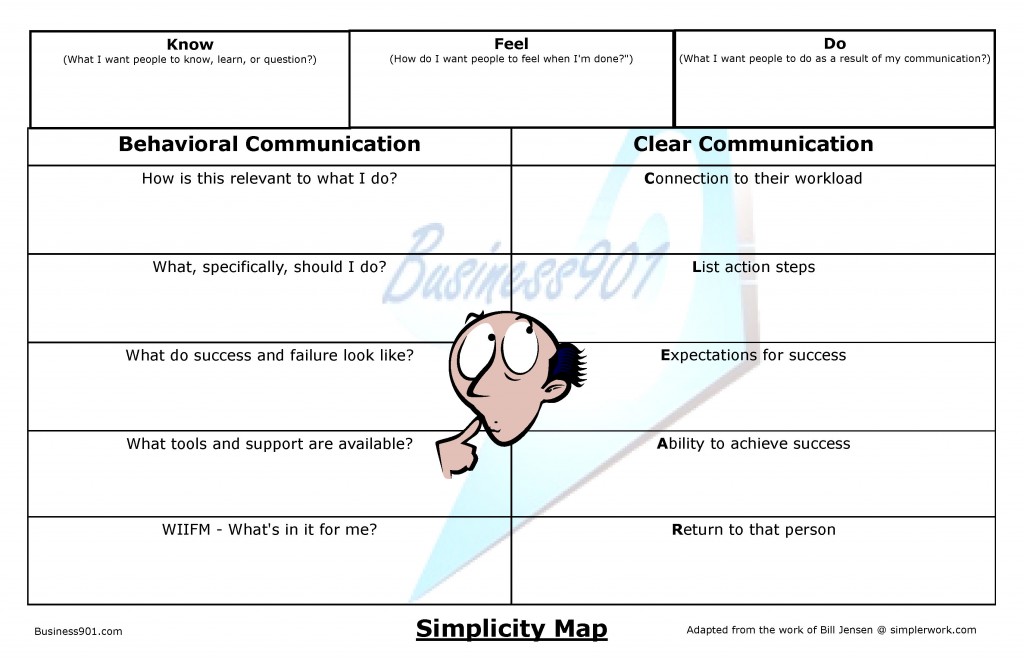Recently I wrote a blog post, Value Stream Mapping should be left on the Shop Floor that some people took as a reflection on Value Stream Mapping versus my real intentions focused on the efforts of many consultants trying to force fit Lean into sales and marketing. I have certainly been guilty of that at times in my writing but in practice always believed that Lean needed to adapt to sales and marketing more than sales and marketing should adapt to Lean. Very early on, I stated that waste should be discovered not found and took an appreciative inquiry approach of SOAR versus SWOT to the practice of Lean Sales and Marketing.
I have been reminded of not trying to force Lean repeatedly by several little notes that I have pinned up in my office for over a decade. One note, I recently wrote about in the post, Innovate from Inside the Box, where I discussed SCAMPER or what I later called Simplified Triz. One of the other notes is about communication, and I cannot think of day that has gone buy in the last ten years that I have not utilized it. It is from the book and handbook of Bill Jensen, Simplicity: The New Competitive Advantage in a World of More, Better, Faster and The Simplicity Survival Handbook: 32 Ways To Do Less And Accomplish More. I would recommend the handbook, but the original book can be purchased at a bargain price, so get both. My pinup on the wall looks something like this.
Cutting through Clutter and Competing on Clarity
1. Know, Feel, Do
- Know: “What’s the one thing I want people to know, understand, learn, or question?”
- Feel: “How do I want people to feel when I’m done?”
- Do: “What do I want people to do as a direct result of my communication?”
2. Behavioral Communication: This is the anatomy of a decision. When people choose between being compliant, acting with full commitment or doing nothing at all, these are the five questions they think about, and want answered:
- How is this relevant to what I do?
- What, specifically, should I do?
- What do success and failure look like?
- What tools and support are available?
- WIIFM – What’s in it for me?
3. CLEAR Communication: These are the answers to each behavioral question. If you wish to compete on clarity, and speed up implementation, you must provide this information, or create ways for people to figure it out themselves.
- Connection to their workload
- List action steps
- Expectations for success
- Ability to achieve success
- Return to that person
If the Know, Feel, Do looks familiar to you, it is what Dan Pink discussed in his recent book, To Sell Is Human: The Surprising Truth About Moving Others. This is the part that I probably use more than any other tool. It is how I view conversations, creating scripts, and even writing blog posts.
On a larger scheme, I look at all of the three steps:
- Know, Feel, Do
- Behavioral Communication
- CLEAR Communication
Not from my point of view but from the point of view of the customer. When I venture out to improve the sales and marketing process, these are core ingredients that I need to address for a successful outcome. Here is my attempt at a Simplicity Persona.
The Simplicity is not in completing the map. The Simplicity is in understanding the customer and delivering each and every time with relevant communication that attaches to the customer work (CLEAR), their needs (Behavioral) and with desired outcomes (Know, Feel, Do).
Any thoughts?

